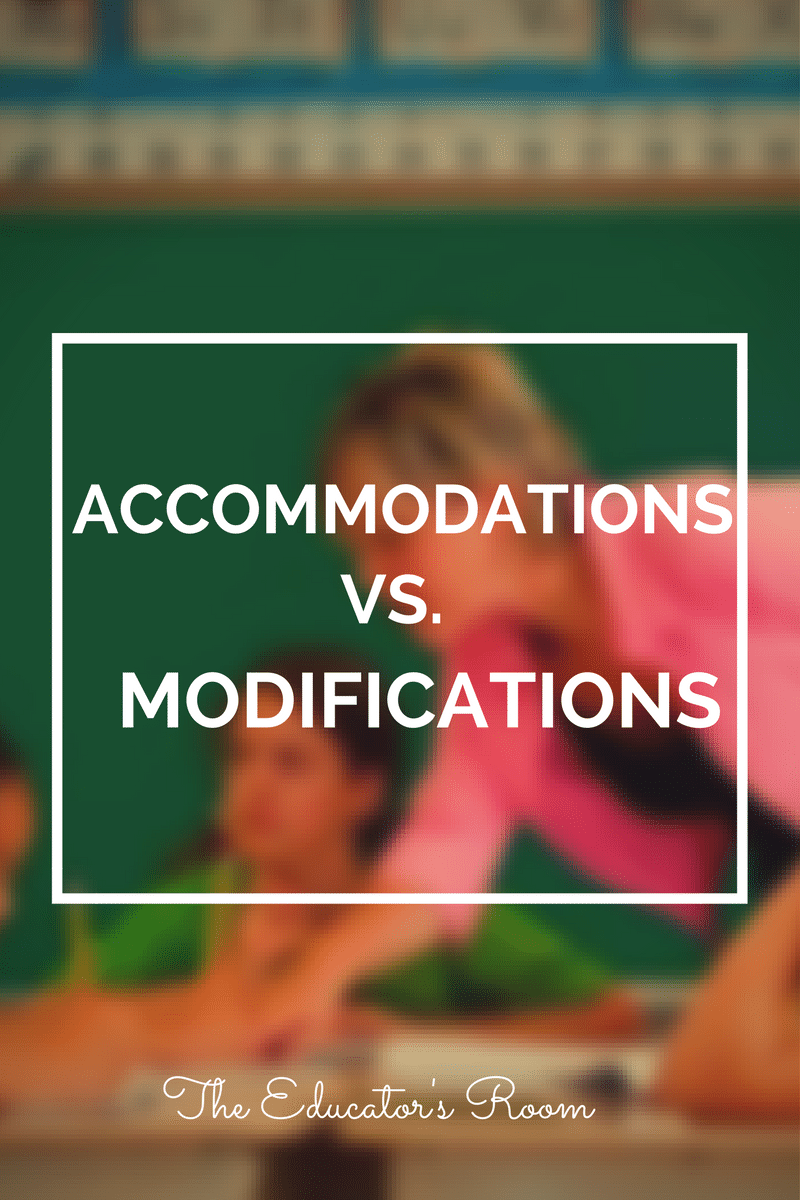When it comes to accommodations and modifications, very few educators have a solid grasp of the differences between the two. What’s the difference between accommodations and modifications? Here’s how to tell them apart!
Accommodations vs. Modifications
An accommodation helps a student with learning gaps experience the same curriculum as his or her peers. For accommodation, you will give strategies, but you don’t alter the curriculum, and the learning outcomes remain the same.
A modification helps a student with a more significant learning need to experience the same curriculum as his or her peers but with different learning outcomes.
For both accommodations and modifications, this all happens in the general education classroom.
While accommodations use tools, materials, technology, visual aids, and timing to help the student access the curriculum to learn the same content as his or her peers, a modification’s intent is to help the student experience the curriculum but not necessarily learn the same content as his or her peers.
With an accommodation, the grading will remain the same, but with a modification, grading may change.
Things like extra time on tests, shortened assignments, marks in books, preferential seating, dictating to scribe, and reading aloud would fall under the category of accommodations. Changing assignments to simplify vocabulary, lowering the reading level of a test, and grading based on different standards than general education peers all fall under the area of modifications.
In short, we use accommodations to allow students with less serious disabilities to access the same curriculum and meet the same learning goals as their peers. We use modifications to allow students with more serious achievement gaps or disabilities to experience the same curriculum as their peers but not necessarily meet the same learning goals as their peers.
You may want to think of education as running a race when you think about using accommodations and modifications. Accommodations level the playing field, and modifications change the field you’re playing on.




Thanks for your clear distinction between an accommodation and modification, of which I previously didn’t have a clear understanding. In particular, the race metaphor was applicable and something I will use in my own practice. Are there any tips or potential areas of trouble you’ve experienced when teaching students with different learning goals in the same classroom?
Thank you for this important clarification. I have found myself using these terms interchangeably, when clearly they are quite different strategies.
This is an excellent and succinct summary of the distinction. I would suggest; however, a small clarification. The same adjustment can be either a modification or accomodation depending on the purpose, subject, and/or student. Simplified vocabulary, for example, might be an accomodation if it is not subject-specific, important, tier 2 vocabulary. Likewise a word bank provided to support spelling is different than an answer bank that changes learning expectations. I worry that if the distinction is oversimplified, students may miss out on reasonable accommodations because they are on a list of modifications somewhere.